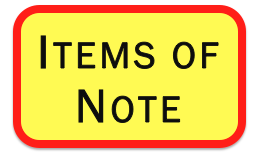 After months of often-acrimonious debate and near-death experiences, U.S. trade legislation was adopted by the Congress with bipartisan support and signed by the President, clearing the way for the Administration to conclude negotiations of the Trans-Pacific Partnership. On June 29, 2015, the President signed into law Trade Promotion Authority (HR 2146) and the Trade Preferences Extension Act of 2015 (HR 1295), which includes Trade Adjustment Assistance.
Trade Promotion Authority (TPA): TPA is a legislative procedure by which the Congress defines U.S. negotiating objectives and specifies a detailed oversight and consultation process for trade negotiations. It establishes requirements for the Administration to notify and consult with Congress, the private sector and other stakeholders during the negotiations of trade agreements. Under TPA, Congress reviews trade agreements and decides whether a proposed agreement will be implemented. TPA allows Congress to consider legislation implementing a trade agreement under expedited, so-called “fast track” procedures. That means the legislation is guaranteed an up-or-down vote without any amendments.
With his newly minted TPA, the President now has the authority he needs to conclude the Trans-Pacific Partnership (TPP) negotiations with 11 partners. According to Politico (July 2), U.S. Trade Representative Michael Froman is aiming to conclude the TPP negotiations before the fall. TPA authority may also provide an impetus to the negotiations of the Transatlantic Trade and Investment Partnership (TTIP) with the European Union. The 10th round of TTIP negotiations is scheduled for next week in Brussels.
The Trade Preferences Extension Act renewed three trade preference programs:
After months of often-acrimonious debate and near-death experiences, U.S. trade legislation was adopted by the Congress with bipartisan support and signed by the President, clearing the way for the Administration to conclude negotiations of the Trans-Pacific Partnership. On June 29, 2015, the President signed into law Trade Promotion Authority (HR 2146) and the Trade Preferences Extension Act of 2015 (HR 1295), which includes Trade Adjustment Assistance.
Trade Promotion Authority (TPA): TPA is a legislative procedure by which the Congress defines U.S. negotiating objectives and specifies a detailed oversight and consultation process for trade negotiations. It establishes requirements for the Administration to notify and consult with Congress, the private sector and other stakeholders during the negotiations of trade agreements. Under TPA, Congress reviews trade agreements and decides whether a proposed agreement will be implemented. TPA allows Congress to consider legislation implementing a trade agreement under expedited, so-called “fast track” procedures. That means the legislation is guaranteed an up-or-down vote without any amendments.
With his newly minted TPA, the President now has the authority he needs to conclude the Trans-Pacific Partnership (TPP) negotiations with 11 partners. According to Politico (July 2), U.S. Trade Representative Michael Froman is aiming to conclude the TPP negotiations before the fall. TPA authority may also provide an impetus to the negotiations of the Transatlantic Trade and Investment Partnership (TTIP) with the European Union. The 10th round of TTIP negotiations is scheduled for next week in Brussels.
The Trade Preferences Extension Act renewed three trade preference programs:
- African Growth and Opportunity Act (AGOA): AGOA is a trade preference program enacted in 2000, which allows most African products to enter the U.S. duty-free. Under AGOA, 39 sub-Saharan African countries qualify for benefits. The Act also provides incentives for sub-Saharan countries to adopt good governance and pro-growth/pro-development policies. In addition, the legislation gives the Administration the ability to withdraw, suspend or limit benefits if designated AGOA countries do not comply with the eligibility criteria. In its June 2015 renewal, AGOA was extended for a 10-year period.
- Generalized System of Preferences (GSP): The (GSP program, the U.S.’s oldest trade preference program, was instituted 40 years ago; it lapsed two years ago. The GSP Program eliminates duties on a wide range of products from 122 developing countries. With the renewal of GSP, the Office of the U.S. Trade Representative has resumed its annual review of products to be added or removed from the GSP list. On July 6, USTR published a notice in the Federal Register seeking petitions and comments relating to the GSP program.
- Haitian Hemispheric Opportunity through Partnership Encouragement Act (HOPE II): HOPE II extends duty-free treatment of apparel exports from Haiti until September 30, 2025.
Post Permalink: https://trade.djaghe.com/u-s-trade-legislation-signed/

